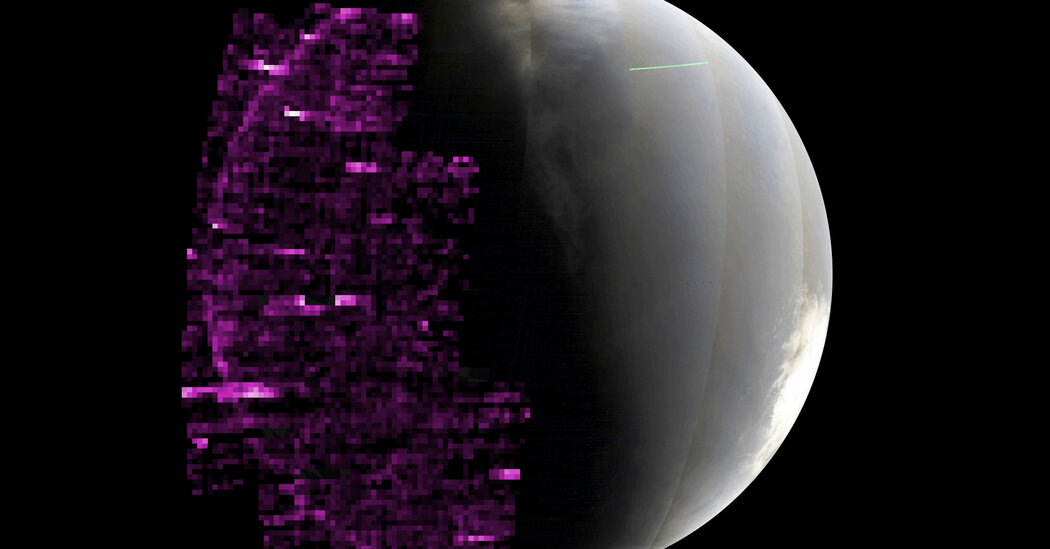The sun fired off a volley of radiation-riddled outbursts in May. When they slammed into Earth’s magnetic bubble, the world was treated to iridescent displays of the northern and southern lights. But our planet wasn’t the only one in the solar firing line. From a report:
A few days after Earth’s light show, another series of eruptions screamed out of the sun. This time, on May 20, Mars was blitzed by a beast of a storm. Observed from Mars, “this was the strongest solar energetic particle event we’ve seen to date,” said Shannon Curry, the principal investigator of NASA’s Mars Atmosphere and Volatile Evolution orbiter, or MAVEN, at the University of Colorado, Boulder.
When the barrage arrived, it set off an aurora that enveloped Mars from pole to pole in a shimmering glow. If they were standing on the Martian surface, “astronauts could see these auroras,” Dr. Curry said. Based on scientific knowledge of atmospheric chemistry, she and other scientists say, observers on Mars would have seen a jade-green light show, although no color cameras picked it up on the surface. But it’s very fortunate that no astronauts were there. Mars’s thin atmosphere and the absence of a global magnetic shield meant that its surface, as registered by NASA’s Curiosity rover, was showered by a radiation dose equivalent to 30 chest X-rays – not a lethal dose, but certainly not pleasant to the human constitution.
NASA has recorded the solar storm from one of the rovers: https://www.nasa.gov/solar-system/planets/mars/nasa-watches-mars-light-up-during-epic-solar-storm/
Remember, kids, Mars has no magnetosphere. All of the sun’s radiation goes right through it’s atmosphere. Any early scientists and colonists will certainly die of radiation poisoning until underground living quarters can be constructed.
This is the best summary I could come up with:
Based on scientific knowledge of atmospheric chemistry, she and other scientists say, observers on Mars would have seen a jade-green light show, although no color cameras picked it up on the surface.
While last month’s auroras were bewitching, they served as a reminder that Mars can be a dangerous, radiation-smothered place and that future astronaut visitors will have to beware.
Lava tubes — lengthy caves forged by volcanic activity — can provide Martian voyagers with hardy refuge from solar storms.
In other words, if you’re a Martian astronaut, “you’d better keep up to date on your space weather forecasts,” said James O’Donoghue, a planetary astronomer at the University of Reading in England.
“There’s nothing to stop these particles plowing right into the atmosphere,” said Nick Schneider, the lead scientist working on the Imaging Ultraviolet Spectrograph on MAVEN at the University of Colorado, Boulder.
The MAVEN orbiter documented a thunderous ultraviolet glow, while a light green hue would have been visible on the surface as it emanated from the atmosphere’s agitated oxygen atoms.
The original article contains 683 words, the summary contains 172 words. Saved 75%. I’m a bot and I’m open source!



